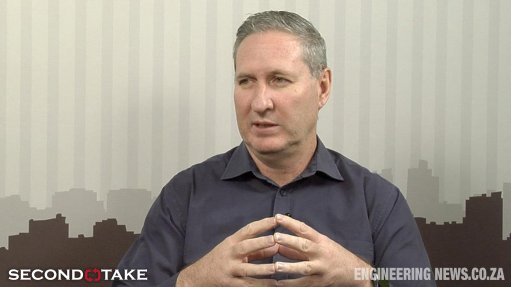CSIR elections prediction system showed accurate results in recent polls
The Council for Scientific and Industrial Research (CSIR) has enjoyed considerable success in its operation to predict the outcomes of the recent local government elections, in the crucial (for the media and political analysts being interviewed) period between the closing of the polls and the announcement of the final results. “We were accurate to within 1% of the final result, in almost every municipality,” highlighted CSIR institutional planning head Dr Zaid Kimmie.
“We are trying to bridge the information gap in the early hours after voting has concluded in an election, when you only have early results coming out, which will not reflect the final result. We’re trying to predict that final result,” he elucidated. “We also want to show how useful mathematics and statistics are.”
The CSIR developed special algorithms for this purpose. These were originally created by a small team led by now-retired CSIR nuclear physicist Jan Greben. These have since been incrementally improved.
The algorithms are run on a standard desktop computer, but a laptop could be used instead. Indeed, the CSIR election prediction team jokes that they could be run on a smartphone, if they developed an app for it. “It’s not computationally complex,” explains Kimmie.
The algorithms do not make use of poll data. The process simply extrapolates from districts that have reported their results to districts that have not reported their results. However, the practice is more complicated than the principle.
“We use some quite fancy maths,” he points out. “We split the country into little groups of voting districts and we extrapolate within these groups.” To give a simplified example, districts that have previously voted for the Democratic Alliance would be grouped together and the outcomes for those which reported their results early would be extrapolated to those that had not yet reported. In reality, the districts and clusters are defined in a more sophisticated way than this, including by use of socioeconomic factors.
“This is intended as a serious aid to the media,” he observed. “We try and give good information early on, to help the analysts. And it’s nice to be first with the results!”
Comments
Press Office
Announcements
What's On
Subscribe to improve your user experience...
Option 1 (equivalent of R125 a month):
Receive a weekly copy of Creamer Media's Engineering News & Mining Weekly magazine
(print copy for those in South Africa and e-magazine for those outside of South Africa)
Receive daily email newsletters
Access to full search results
Access archive of magazine back copies
Access to Projects in Progress
Access to ONE Research Report of your choice in PDF format
Option 2 (equivalent of R375 a month):
All benefits from Option 1
PLUS
Access to Creamer Media's Research Channel Africa for ALL Research Reports, in PDF format, on various industrial and mining sectors
including Electricity; Water; Energy Transition; Hydrogen; Roads, Rail and Ports; Coal; Gold; Platinum; Battery Metals; etc.
Already a subscriber?
Forgotten your password?
Receive weekly copy of Creamer Media's Engineering News & Mining Weekly magazine (print copy for those in South Africa and e-magazine for those outside of South Africa)
➕
Recieve daily email newsletters
➕
Access to full search results
➕
Access archive of magazine back copies
➕
Access to Projects in Progress
➕
Access to ONE Research Report of your choice in PDF format
RESEARCH CHANNEL AFRICA
R4500 (equivalent of R375 a month)
SUBSCRIBEAll benefits from Option 1
➕
Access to Creamer Media's Research Channel Africa for ALL Research Reports on various industrial and mining sectors, in PDF format, including on:
Electricity
➕
Water
➕
Energy Transition
➕
Hydrogen
➕
Roads, Rail and Ports
➕
Coal
➕
Gold
➕
Platinum
➕
Battery Metals
➕
etc.
Receive all benefits from Option 1 or Option 2 delivered to numerous people at your company
➕
Multiple User names and Passwords for simultaneous log-ins
➕
Intranet integration access to all in your organisation





















